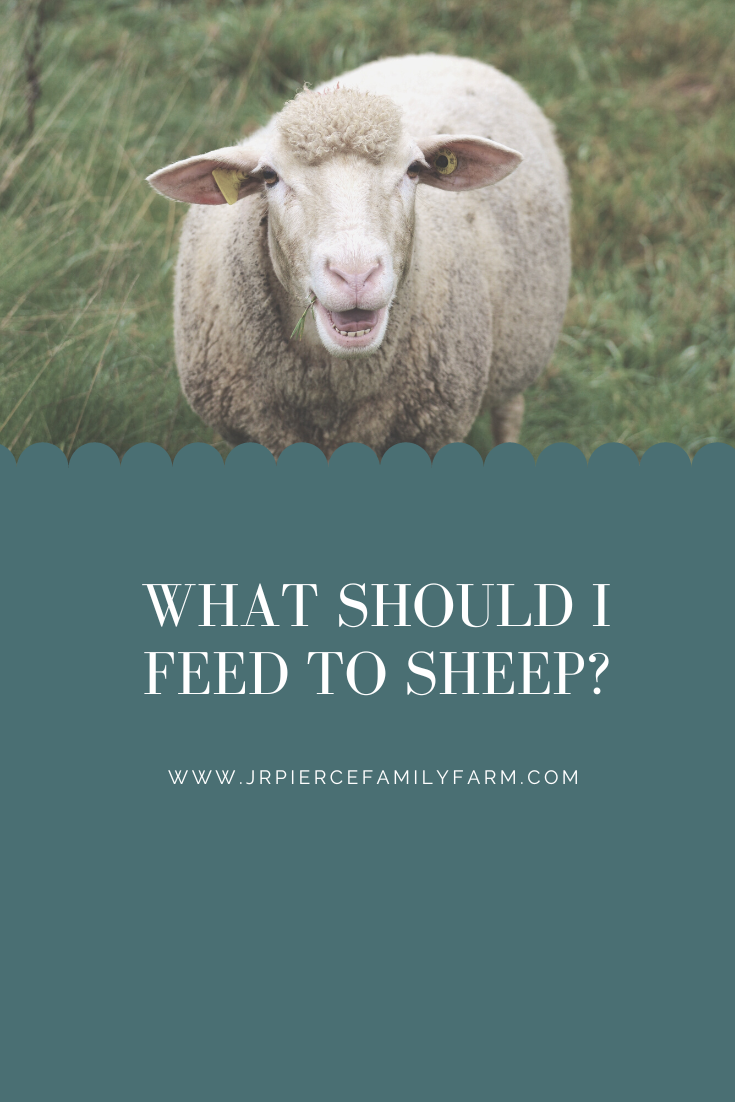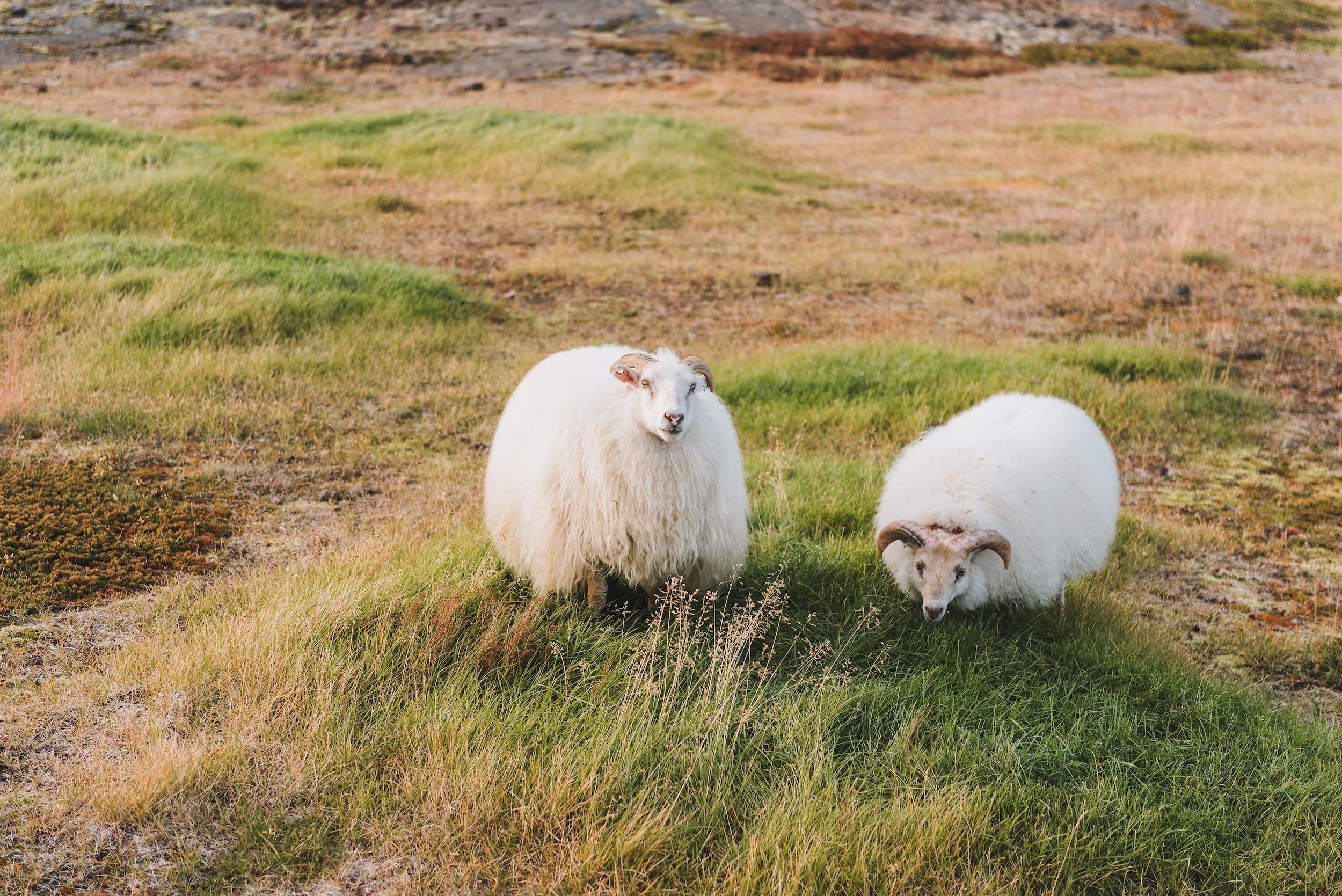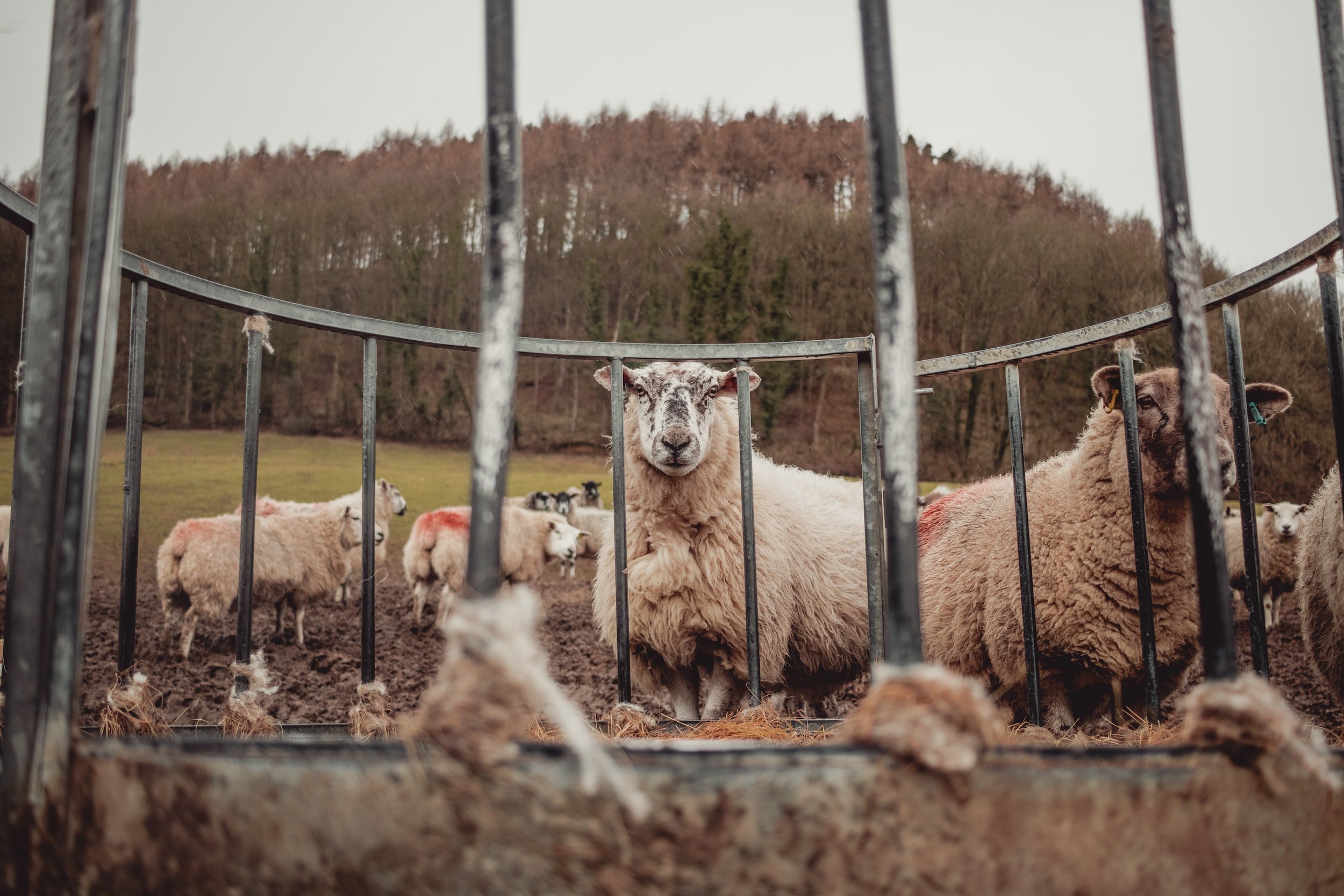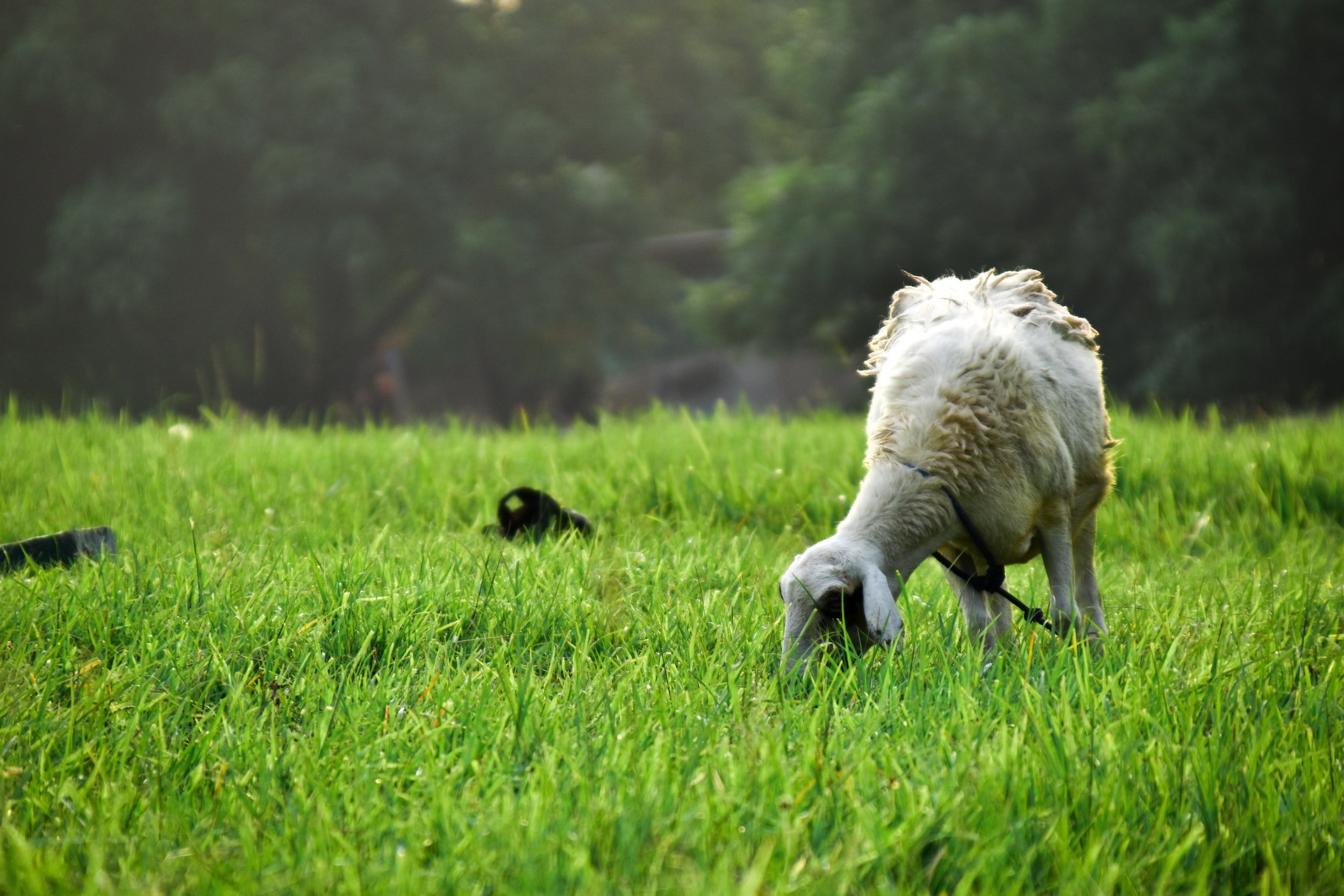What Should I Feed to Sheep?
We are working hard at expanding our flock of sheep here on the farm.
We are relatively new to keeping sheep, but know that diet is probably the most important part of getting it right when it comes to raising animals.
Sheep are by far one of the easiest animals to feed - they have pretty basic needs throughout all of their life stages, from weaning to growing to finishing and lactation.
Here are the basics that you need to know to feed your sheep a healthy diet.
**J&R Pierce Family Farm is a participant in the Amazon Services LLC Associates Program, an affiliate advertising program designed to allow sites to earn advertising fees by linking to products on Amazon. I often link to Amazon when recommending certain products, and if you choose to purchase, I may earn a small percentage of the sale. It costs you nothing extra, and all recommended products are ones that I personally vouch for. **
What Should You Not Feed Sheep?
Sheep are herbivores, meaning they can eat just about any kind of plant matter (within reason). You should avoid feeding your sheep any of the following, which pose a serious health risk:
Any food that is moldy, rotten, or spoiled.
Anything containing caffeine, chocolate, onions or garlic.
Avocados and rhubarb leaves as these can cause serious health issues for the animals.
It is also important to note that sheep cannot digest large amounts of grain so they should only have small amounts in their diet if at all possible. We raise sheep that are 100% grass fed with the exception of small amounts of grain during lambing (and occasionally oats).
Learn more about feeding sheep in this video:
What Do Sheep Eat?
Feeding your sheep is one of the most important considerations to make when you are raising sheep. Your feed can be the greatest expense or the least if you decide to raise your animals mostly on pasture.
In a nutshell, these are the basic feeding stages of sheep:
Pre-weaning
Growing
Finishing
Breeding
Lactation
Maintenance
Gestation
For the most part, the diet of your sheep will be approximately the same throughout all of these stages. As with humans, though, you may need to add various nutrients or extra calories depending on the stage of life that your sheep are in.
Most sheep feeding programs consist primarily of forage. This can be pasture or range forage, but it can also be hay during the winter months. This forage will be the primary source of energy, but depending on the stage of life your sheep is in, you may have to add other vitamins and minerals, too.
The core elements of a sheep’s diet consist of the following, none of which are that different than what you are probably already used to in feeding your sheep:
Protein
Fat
Fiber
Concentrates
Water
Forage
Sheep can get most of their nutrients and caloric need from forage but it’s difficult to say the exact amount of forage your sheep need. We'll give you more details on hay estimates below.
Other factors, besides stage of life, that can influence your sheep’s caloric needs include:
Size of the animal
Length of fiber (animals with thick coats will need fewer calories than those with short coats in the wintertime)
Breeding stage
Water
Don’t neglect water as a primary component of your sheep’s diet. A sheep will drink up to a gallon of water a day depending on its size and life stage. If you have snow available, your sheep will be able to consume most of their hydration needs from eating snow.
However, if your sheep are in a stage of life that requires additional water - such as lactation or late gestation - you will need extra water.
Keep in mind that lack of regular, clean water can reduce the production capabilities of your sheep. When they are thirsty, they will eat less, and they will have problems digesting and growing. When your ewes are gestating or lactating, know that their water intake will double by the fifth month of gestation and continue while the are lactating.
Sheep are picky about the temperature of the water - they will not drink as much if it is too cold or too warm. You may need to use a stock tank de-icer during the winter to help keep the water at a desirable temperature.
Other Nutrients
Mineral nutrition in feeding sheep is not something to be taken lightly. Your sheep need the following macronutrients:
Calcium
Sodium
Magnesium
Phosphorous
Chlorine
These often need to be supplemented through sources like ground limestone, dicalcium phosphate, legumes, or bone meal. Some people try to use grain as a source of nutrients, but this can be challenging as most are poor sources of calcium.
The ratio of calcium to phosphorus is important when you are dealing with male sheep. They need at least two parts calcium to one part phosphorus. If you do not meet this balance, stone formation can occur in the kidneys and bladders of your rams and wethers - this can be deadly.
Magnesium is also important when your sheep are grazing high-moisture pasture. Too little magnesium can cause a dangerous condition called grass tetany. They also need sodium and chlorine, which too can be easily implemented with a mixture. You can offer it in a simple mineral feeder like this.
Another micronutrient that you need to be careful about is copper. While sheep need a very small amount of copper in their diets, they cannot tolerate very much. Therefore, you need to make sure that you are using a feed supplement formulated specifically for sheep. For salt in particular, only a white salt block should be offered because trace mineral blocks contain copper.
What is the Difference Between Lamb and Sheep Feeding?
Quick reminder here - lambs are just young sheep. You will want to start feeding your lambs creep feed during the nursing period - they can access this as early as 21 days of age. Make sure you keep the feeding area clean and well-bedded to encourage them to explore it.
Once the lambs reach 85 to 90 lbs, they will start eating a consistent diet of grain and hay. On average, these are the amounts of hay needed per day by sheep in their various life stages. Grain calculations are more difficult to determine as this will depend on your breed, time of year, and other factors that can vary by flock.
Ewes: 2.4-3 lbs
Late gestation/lactating ewes: 4-7 lbs
Rams: 4-7 lbs
Feeder lambs (up to 110 lbs): 0.5-2 lbs
These calculations are assuming that your eyes will weigh an average of 150 lbs and your rams around 250. However, for every additional 25 lbs of animal, you will want to add a ¼ lb of feed per day.
Do I Need to Give Sheep Dewormers?
Internal parasites can cause some serious issues with the process of growing out your shape. Because they damage the intestinal lining of your sheep, competing for nutrients and reducing weight, you need to make sure your sheep do not contract them.
Often, putting your sheep on consistent fresh pasture through rotational grazing can help prevent parasites, but you may also need to use a chemical dewormer such as:
Levamisole
Macrocyclic Lactone
Benzimidazole
How to Wean Lambs
Early weaning generally takes place when lambs are about 60 days old, but this can vary depending on the breed of sheep as well as your ultimate goals with the flock. While some farmers think it is more efficient to wean a lamb early so that the mother isn’t expending extra energy producing milk, others believe that milk-fed lambs fatten up more quickly than those consuming an adult diet.
Regardless, you should wait until your labs are at least 45 lbs before you begin to wean. It can be tough to dry off ewes when lambs are younger than 60 days. We prefer a natural weaning method in which our lambs stay on the pasture with their mothers until they are around six months old. This decreases the stress of weaning and while we've heard that it causes labs to put on weight more slowly, we have not found this to be the case with our flock.
To wean your lambs, you will need to remove any grain from the diet of the ewes to lower protein and energy level - this will naturally decrease milk production. Make sure your lambs are vaccinated, dewormed, castrated, and ear-tagged prior to weaning, if you plan on administering these treatments.
To reduce stress to the lambs, move the ewes to a new location - leave the lambs in the pen in which they were born as this will reduce stress. Put your ewes on lower-quality hay (with lower protein) until their udders start to dry off. You will want to keep an eye out forsigns of mastitis.
Can I Feed Sheep Goat Feed?
You should avoid feeding your sheep goat feed. It’s generally fine to feed goats sheep feed but not the other way around. Most goat feeds contain copper sulfate, which is fine for goats, but, as we mentioned, toxic to sheep.
While feeding a single bag of goat feed to your sheep probably won’t hurt, using goat feed as a consistent ingredient in your sheep’s daily diet will lead to severe health problems down the road.
What to Feed Sheep
You should feed your sheep primarily hay but supplement with occasional feed in one of the three following formats:
Pelleted feed, which will have all of the ingredients milled and in a pellet shape
Sweet feed (such as fresh grains and pellets)
Block feed (which include all the basic ingredients in solid blocks)
In addition to this feed, you should feed a mineral supplement designed specifically for sheep. This can take the form of block or loose minerals.
In most cases, you can feed your sheep with hay alone as long as you include a supplemental source of minerals and salt. You should increase the amount of available hay during the winter, and only add additional feed when your sheep are in a stage of life that demands it (such as gestation).
In fact, it is recommended that you increase your ewe’s grain amounts just before they start to breed. This is a process known as flushing, and it should be done about two weeks before you turn your rams for breeding.
That’s all you need to know! Like I said, sheep are pretty easy animals to feed - just make sure you provide them with ample access to all the hay and water you want, and you should be good to go. What other tips do you have for raising sheep? Let me know in the comments!
Want to learn more about farming? Be sure to check out these featured articles!
Subscribe to our email newsletter for regular tips and tricks on homesteading and farming – wherever you are. You can also follow us on Instagram (@jrpiercefamilyfarm) and Pinterest (J&R Pierce Family Farm) for frequent updates. Happy homesteading!








